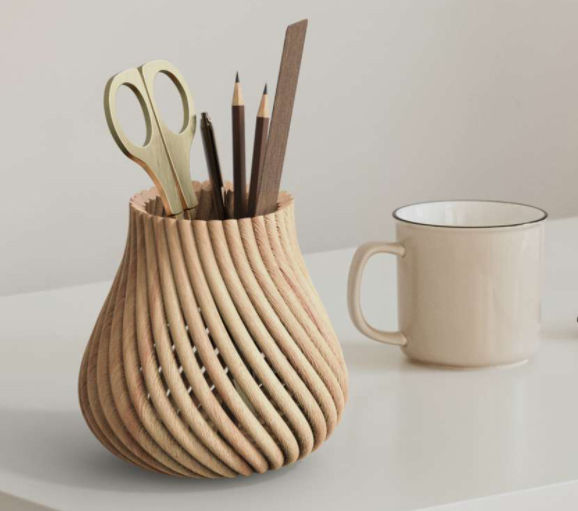Editor’s Pick: New additive manufacturing process for wood
Desktop Metal Forust wood additive manufacturing helps re-materialize functional wood products.

Desktop Metal’s new Forust technology “upcycles” wood waste into a new additive manufacturing material with a wide variety of applications. Image courtesy of Desktop Metal.
Latest News
May 19, 2021
Desktop Metal is launching Forust, a new process to sustainably produce functional end-use wood parts using its existing additive manufacturing technology. Desktop Metal says the Forust process “upcycles” waste byproducts from wood manufacturing (cellulose dust) and the paper industry (lignin), re-materializing functional wood products.
The company says this new technology and additive manufacturing material “offers architects, designers and manufacturers a new path to produce luxurious custom wood pieces for home decor, interiors, transportation and architectural design.” Taking advantage of AM technology means wood parts and products can be created with geometries and structural characteristics unavailable using traditional subtractive wood manufacturing processes.
Unlike existing wood fiber 3D printing options—which rely on a polylactic acid filament that is a mixture of plastic and wood—the Forust process manufactures by placing layers of specially treated sawdust, joined by a non-toxic and biodegradable binder. Digital grain can be printed on every layer. Parts can be sanded, stained, polished, dyed, coated or refined in the same fashion as traditionally manufactured wood products.
The process does not require internal supports to be printed. Desktop Metal says this allows designers to have greater freedom “in creating complex features and iconic designs that would be difficult or impossible to produce with traditional woodworking methods.”
The company says Forust technology allows for new environmentally sustainable material value chains, reducing wood waste and eventually lowering the number of trees being harvested for industrial uses.
“Forust technology allows us to take something that was previously wood waste and re-materialize it into exquisitely beautiful and useful things,” says Architect and Author William McDonough.
Well-known industrial designer Yves Béhar has created a new collection, Vine, which offers a vessel, bowl, basket and tray created using the Forust process. “This new technology allows us to really address some of the critical problems around the environment.”
Interested companies, designers or consumers can learn more or order custom parts here.
Sources: Press materials received from the company and additional information gleaned from the company’s website.
Subscribe to our FREE magazine, FREE email newsletters or both!
Latest News
About the Author
DE’s editors contribute news and new product announcements to Digital Engineering.
Press releases may be sent to them via [email protected].






